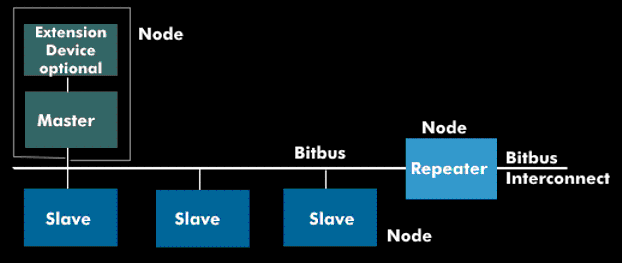Bitbus
The Bitbus is an open, real-time capable fieldbus that was developed by Intel as early as 1983 and standardized by the IEEE in 1990 under IEEE 1118.
As a fieldbus for automation and production, the Bitbus can connect autonomously operating sensors, actuators and control devices over long distances. The distance can be one kilometer and more at data rates of 62.5 kbit/s. Even greater distances can be bridged with repeaters. For shorter distances, higher data rates of 375 kbit/s and 1.5 Mbit/s are available. The Bitbus uses STP cables with an impedance of 120 ohms as the transmission medium. A single-pair cable is sufficient for transmission. Access to the transmission medium is deterministic, i.e. each connected station is granted access rights within a defined period of time.
In terms of operation, it is a master- slave operation. Per LAN segment 28 stations can be connected, 250 in total.
The basis of the Bitbus technology is the RS-485 industrial bus interface and the SDLC protocol from the SNA world. The synchronous, message-based Synchronous Data Link Control (SDLC) works with error detection. The Bitbus protocol is especially suitable for the transmission of small data packets with up to 248 bytes. Bitbus uses Non Return to Zero Inverted( NRZ-I) as coding.

